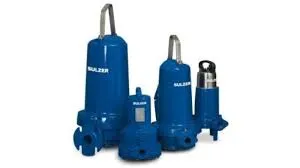English
- Afrikaans
- Albanian
- Amharic
- Arabic
- Armenian
- Azerbaijani
- Basque
- Belarusian
- Bengali
- Bosnian
- Bulgarian
- Catalan
- Cebuano
- Corsican
- Croatian
- Czech
- Danish
- Dutch
- English
- Esperanto
- Estonian
- Finnish
- French
- Frisian
- Galician
- Georgian
- German
- Greek
- Gujarati
- Haitian Creole
- hausa
- hawaiian
- Hebrew
- Hindi
- Miao
- Hungarian
- Icelandic
- igbo
- Indonesian
- irish
- Italian
- Japanese
- Javanese
- Kannada
- kazakh
- Khmer
- Rwandese
- Korean
- Kurdish
- Kyrgyz
- Lao
- Latin
- Latvian
- Lithuanian
- Luxembourgish
- Macedonian
- Malgashi
- Malay
- Malayalam
- Maltese
- Maori
- Marathi
- Mongolian
- Myanmar
- Nepali
- Norwegian
- Norwegian
- Occitan
- Pashto
- Persian
- Polish
- Portuguese
- Punjabi
- Romanian
- Russian
- Samoan
- Scottish Gaelic
- Serbian
- Sesotho
- Shona
- Sindhi
- Sinhala
- Slovak
- Slovenian
- Somali
- Spanish
- Sundanese
- Swahili
- Swedish
- Tagalog
- Tajik
- Tamil
- Tatar
- Telugu
- Thai
- Turkish
- Turkmen
- Ukrainian
- Urdu
- Uighur
- Uzbek
- Vietnamese
- Welsh
- Bantu
- Yiddish
- Yoruba
- Zulu
Telephone: +86 13120555503
Email: frank@cypump.com
Aug . 13, 2024 13:16 Back to list
Deep Dive into the Functionality and Applications of Submersible Pumps in Various Industries
Submersible Pumps An Overview
Submersible pumps are a crucial component in the field of fluid management, particularly in applications involving the transportation of water and other liquids. These specialized pumps are designed to operate while submerged in the fluid they are pumping, making them ideal for a variety of settings such as wells, sewage treatment plants, and industrial processes.
Working Principle
The primary function of a submersible pump is to move fluids from a lower elevation to a higher one. This is achieved through the use of a sealed motor that is attached to the pump itself, allowing the entire assembly to be submerged in the liquid. The submersible design minimizes the risk of cavitation, a phenomenon that can occur when a pump struggles to draw liquid into its inlet. By being fully immersed, these pumps can efficiently push fluid to the surface without the need for priming, which is often required with surface pumps.
The operation of a submersible pump involves a series of components, including an impeller, diffuser, and motor. The impeller is designed to generate the necessary hydraulic energy to lift the fluid, while the diffuser helps direct the flow and maintain pressure. The motor, typically electric, is housed within the pump casing and is protected from the liquid being pumped, usually by special seals that prevent leakage.
Applications
Submersible pumps have a wide range of applications. In residential settings, they are commonly used for basement dewatering, where excess water can lead to flooding and damage. These pumps are also prevalent in agricultural operations for irrigation purposes. They enable farmers to extract water from wells or reservoirs efficiently, ensuring that crops receive adequate moisture.
In industrial applications, submersible pumps are essential in sewage treatment facilities, where they help transport wastewater to treatment systems. Their ability to handle solids and debris makes them suitable for these challenging environments. Additionally, they are used in construction sites for dewatering excavations, thus allowing safe and efficient work conditions.
Advantages
submerssible pump

One of the primary benefits of submersible pumps is their efficiency. By operating submerged, they can move more fluid with less energy compared to surface pumps. This efficiency translates into reduced operational costs, making them a cost-effective solution for many applications.
Furthermore, submersible pumps are generally quieter than traditional pumps since the surrounding fluid dampens sound. Their compact design also allows for easy installation in tight spaces, making them versatile for different working conditions.
Moreover, these pumps are less susceptible to environmental factors such as freezing temperatures or excessive debris, which can hinder other types of pumps. Since they are not exposed to air, there is less risk of corrosion, ensuring longer lifespan and durability.
Disadvantages
Despite their many advantages, submersible pumps do have some drawbacks. Maintenance can be more challenging since the entire assembly must be removed from the liquid for inspection and repairs. Additionally, their installation requires careful planning to ensure proper sealing and safeguarding against leaks.
Another consideration is power supply. Submersible pumps often require reliable electrical connections, which can be an issue in remote or off-grid locations. Furthermore, selecting the appropriate size and capacity is essential; an oversized pump can lead to inefficiencies, while an undersized model may not meet fluid volume requirements.
Conclusion
Submersible pumps play an integral role in modern fluid management across various sectors, from agriculture to industrial applications. Their efficient operation, compact design, and versatility make them an invaluable tool in managing water and other liquids. As technology advances, the design and functionality of submersible pumps will continue to evolve, promising even greater efficiencies and capabilities in the future. Whether for household use or large-scale industrial processes, understanding the significance of submersible pumps is essential in maximizing their benefits.
-
Custom Drilling Mud and Slurry Pump Supplier - High Efficiency, Tailored Solutions
NewsJun.10,2025
-
Supply Vertical Submersible Sewage Pump High-Efficiency WQ/QW Pumps Supplier
NewsJun.10,2025
-
Premium Sewage Ejection System & Pumps Efficient Waste Removal
NewsJun.09,2025
-
Premium Wholesale Slurry Pump Impellers Durable & Efficient Slurry Handling
NewsJun.09,2025
-
Top Sewage Pump Companies Durable Industrial Solutions for Efficiency
NewsJun.09,2025
-
Heavy Duty Slurry Pumps - OEM High Performance & Bulk Wholesale
NewsJun.09,2025










